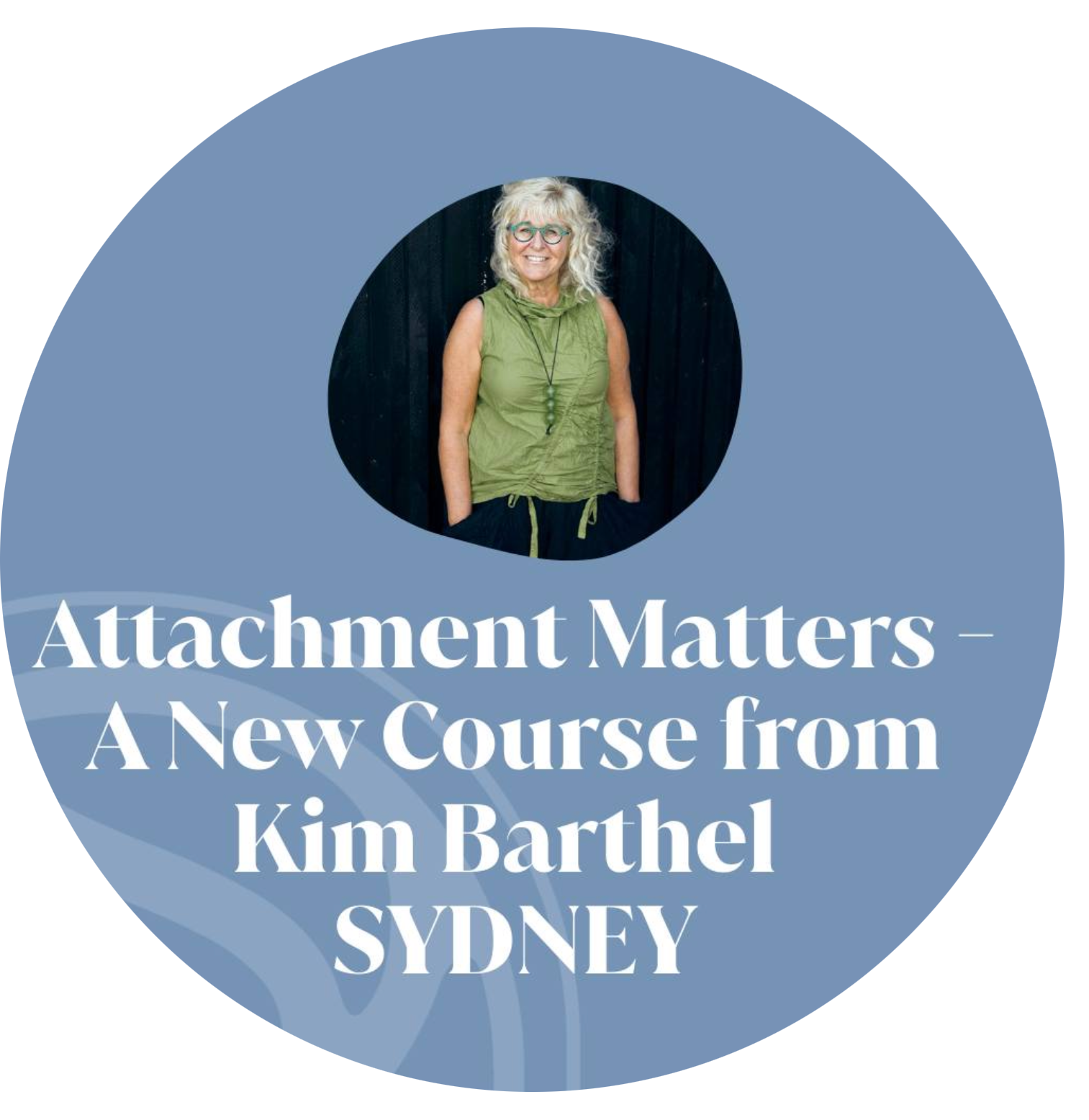A new course from
Kim Barthel!
2-Day Workshop in SYDNEY
DATE
Thursday 20 November 2025 9:00 AM - Friday 21 November 2025 4:30 PM (UTC+10)
LOCATION
Novotel Paramatta
350 Church st, Parramatta NSW 2150
Human beings are wired for connection and belonging
Whether you work in healthcare, education, or any profession that supports others, understanding the theory and neurobiology of attachment is essential.
In this innovative and practical course, you’ll explore how attachment adaptations shape our sense of self, relationships, and interactions throughout life. More importantly, you’ll gain strategies to foster co-regulation, helping you build attuned, meaningful connections with those you support.
Join us to deepen your understanding of neurobiology, attachment, and human connection – and elevate the way you engage with others.
Learning Objectives
By the end of this course, participants will be able to:
Describe the neurobiological foundations and role of attachment in emotional and relational development across different environments and contexts
Discuss the different theoretical models of attachment and how they can assist with understanding oneself and others
Explain attachment through a spectrum of attachment adaptations with flexibility, and their impact on self-awareness for both the clients and the therapists as they relate to self-regulation
Develop individual therapeutic strategies for responding effectively to the various shades of attachment adaptations, enhancing effective therapeutic use of self and co-regulation
Target Audience
Therapists, counsellors, and mental health professionals, including OTs, psychologists, speech pathologists, social workers, medical professionals
Educators
Professionals working with children and families
Coaches and professionals in relational fields
Modules
Module 1: The Neurobiology of Attachment & Attachment Disruptions
Foundations of Attachment Theory (Drs. John Bowlby & Mary Ainsworth)
The evolutionary purpose of attachment in survival and species development
Neurobiology of Attachment
Limbic system, Amygdala, Hippocampus, Prefrontal Cortex
The role of the Vagus in co-regulation
Autonomic States & Attachment
Fight, Flight, Freeze, and Fawn
Cortisol, Oxytocin, and the impact of early stress
Impact of Early Attachment Disruptions
Developmental Trauma and Attachment Insecurity
Epigenetic and intergenerational influences
Neurodiversity and how individual differences impact attachments
Module 2: Classic & Emerging Attachment Models - Explore the different models of attachment and how they can assist with understanding oneself and others.
Overview of Classic Attachment Theory
Secure, Insecure Avoidant, Insecure Connection-Seeking, Disorganized
Examining and Expanding on Original Attachment Models
Limitation of focus on pathology rather than understanding attachment as adaptations dependent on the immediate circumstances
Introduction to the Dynamic Maturational Model (DMM) (Dr. Pat Crittenden)
A focus on adaptive behaviours rather than firm and set patterns
Developing problem solving skills in assessing the roots of an individual's behaviour (sensation, cognition, emotion) and attachment strategies, allows us more clarity when developing interventions
Module 3: Adaptive Shades of Attachment - Observing the various shades of attachment
Avoidant tendencies
Low-risk avoidant adaptations
High-risk avoidant adaptations (compulsive caregiving, people pleasing, compliance)
Physiological states and embodied presentation associated with avoidance
Preoccupied tendencies/Connection-Seeking
Low-risk connection-seeking adaptations
High-risk connection-seeking strategies (aggressive/controlling behaviours)
Physiological states and embodied presentation associated with connection-seeking
Disorganized Adaptations & Developmental Trauma
Physiological states and embodied presentation of disorganized attachment (developmental trauma) adaptations
The connection between attachment and interoception (internal body awareness)
How Attachment Adaptations Unfold Over Time
Developmental pathways of attachment adaptations
Individual differences: addressing neurodiversity
Adult attachment & relational dynamics
How attachment behaviours vary across different cultures (e.g., independence-focused vs. collectivist caregiving styles)
Module 4: Therapeutically Responding to the Varying Shades of Attachment Therapeutic Principles for Attachment-Based Work
The role of co-regulation in relationships
Self-awareness related to own prominent attachment adaptations
Therapeutic Use of Self
Interventions for Different Attachment Strategies
Avoidant Adaptations
Foster emotional awareness and connection without overwhelming
Supporting trust and interdependence
Sideways approach
Connection-Seeking Adaptations
Connect before they seek connection
Encourage cognitive reflection and balanced emotional expression
Clarity with kindness
Disorganized Adaptations & Trauma-Sensitive Approaches
The importance of somatic approaches to support regulation
Potential to integrate attachment theory with Eye Movement Desensitization and Reprocessing (EMDR), Dyadic Developmental Psychotherapy (DDP), Psycho-Sensory Intervention (PSI), Sensory Integration Therapy SI), Internal Family Systems (IFS), and Cognitive Behavioural Therapy (CBT)
Personal & Professional Integration
How attachment theory informs our therapeutic presence
Importance of self-reflection: participants’ own attachment adaptations
Applying attachment knowledge to real-world scenarios
Hosted by:


